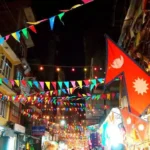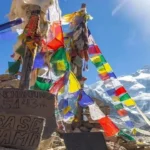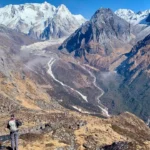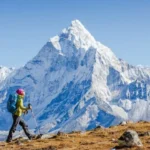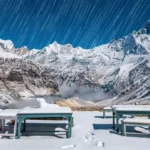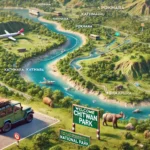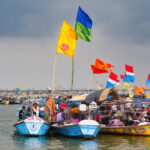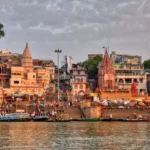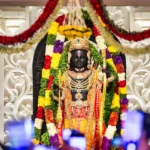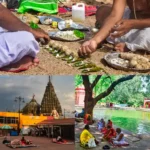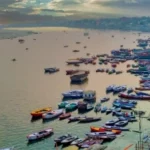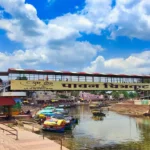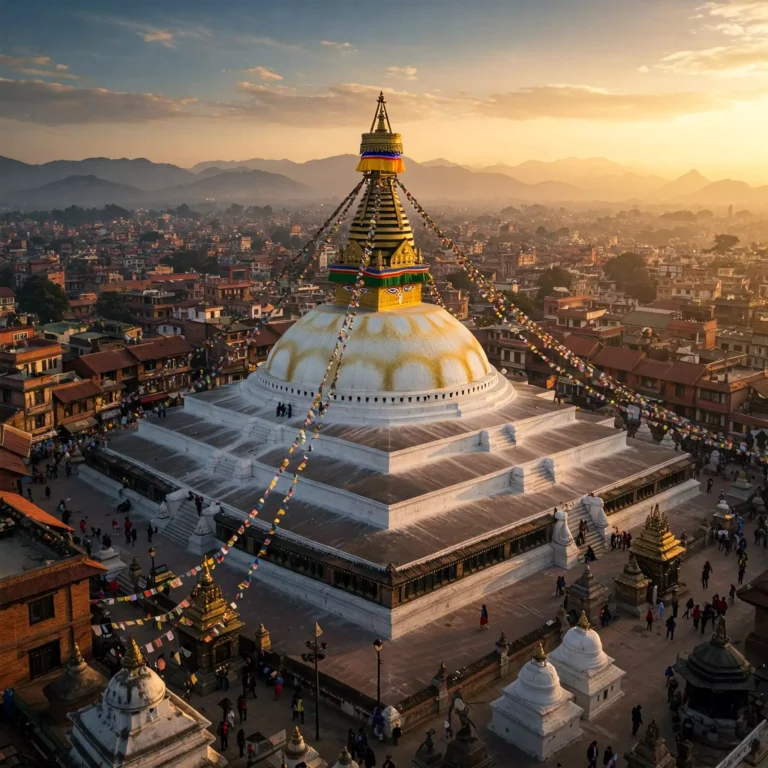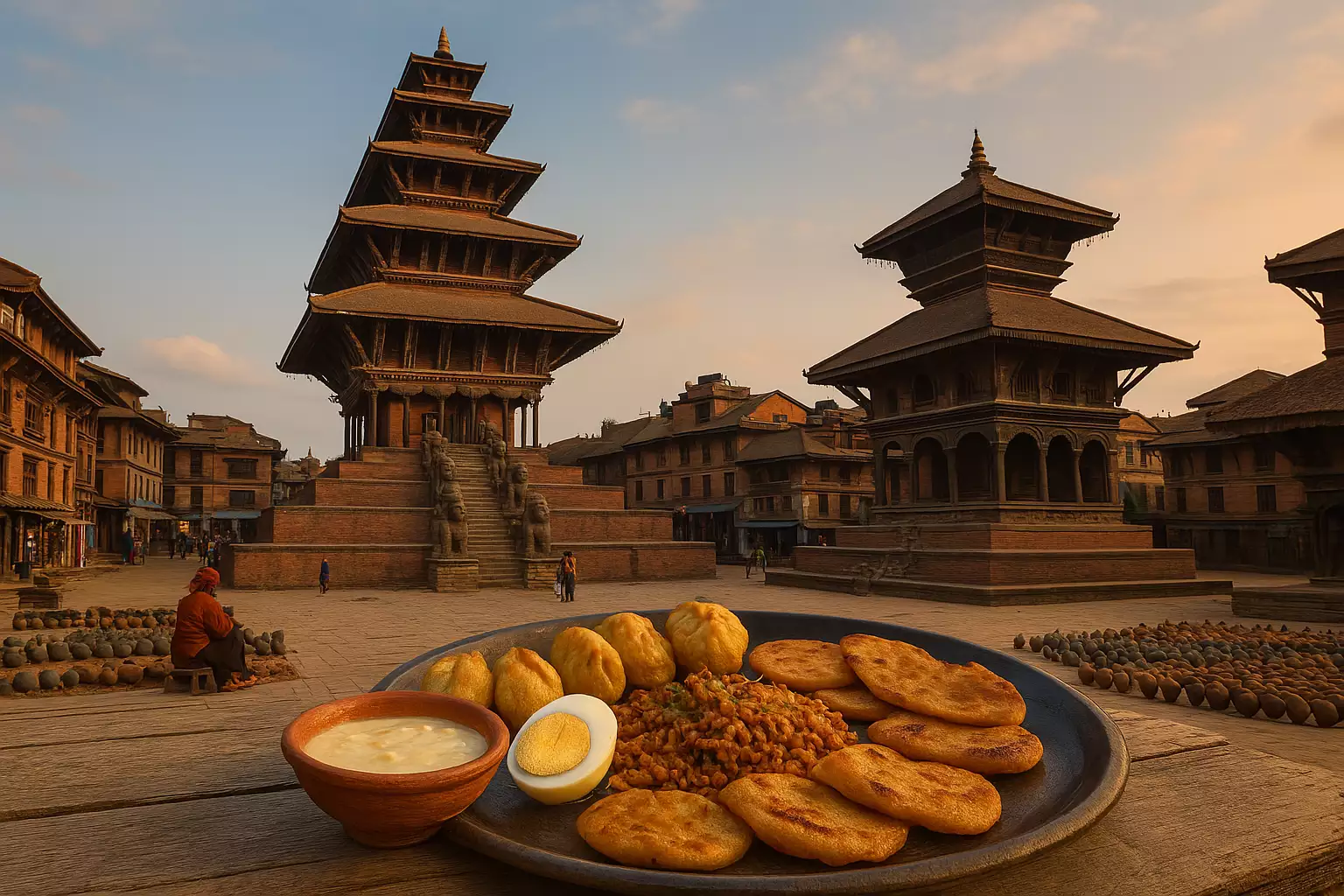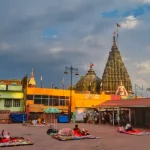The History Behind Bhaktapur Durbar Square
Bhaktapur Durbar Square isn’t just a stunning architectural site—it’s a timeless narrative etched in brick and wood, telling the story of an ancient kingdom that thrived on art, devotion, and innovation.
🏯 Rise of the Malla Dynasty
The roots of Bhaktapur Durbar Square date back to the 12th century, but it was during the reign of the Malla Dynasty (14th–18th century) that the city reached its golden age. Under rulers like King Yaksha Malla and later Bhupatindra Malla, Bhaktapur became a flourishing centre of politics, religion, and craftsmanship.
These kings weren’t just rulers—they were patrons of art and culture, commissioning temples, palaces, courtyards, and sculptures that still captivate visitors today. The city’s strategic location on the ancient trade route between Tibet and India helped it thrive both economically and culturally.
🏗️ Architectural and Cultural Legacy
The Malla period gave birth to Bhaktapur’s signature look: multi-tiered pagoda temples, red-brick buildings, and ornately carved wooden windows. These weren’t just built for beauty—they were expressions of religious devotion and civic pride.
Bhaktapur Durbar Square served as the royal palace complex and administrative hub. But more than that, it was the beating heart of the city, hosting royal ceremonies, cultural festivals, and public gatherings.
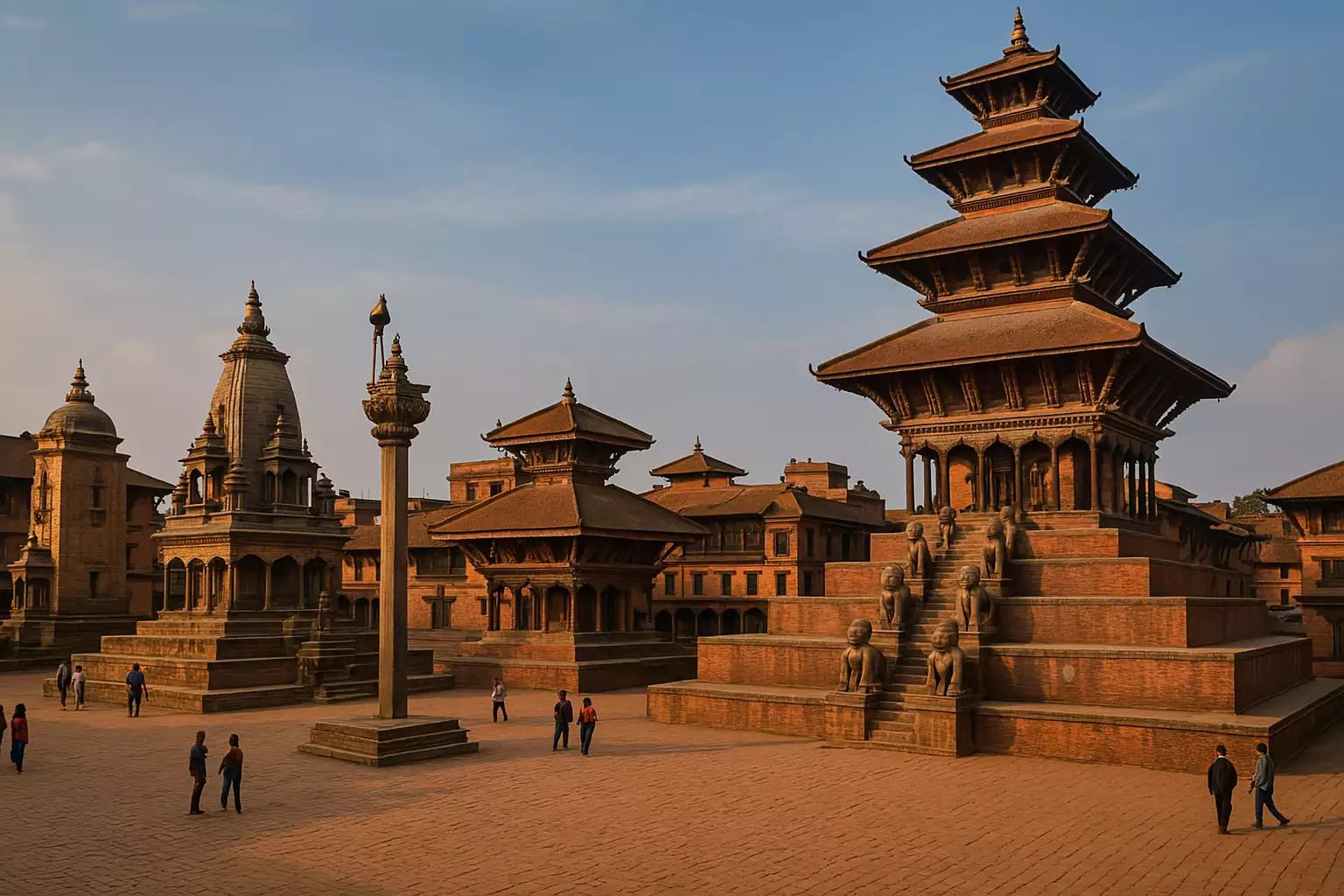
🌍 A UNESCO World Heritage Site
In 1979, the square was designated a UNESCO World Heritage Site, recognizing its cultural importance and helping preserve it for future generations. It’s one of the few places where medieval urban planning still coexists with daily life, making it a living heritage site.
💔 Earthquake & Resilience
In 2015, a devastating earthquake shook Nepal, causing significant damage to several temples and structures within the square. But what followed was a testament to Bhaktapur’s resilience—massive restoration efforts began almost immediately, with local artisans and global experts working together to bring the city’s architectural jewels back to life.
Today, as you walk through the square, you’ll see a mix of centuries-old monuments and skillfully restored buildings, each with a story to tell.
Architectural Wonders You Can’t-Miss at Bhaktapur Durbar Square
Bhaktapur Durbar Square is like a living gallery of ancient Nepalese art and architecture. Whether you’re gazing up at towering pagodas or getting lost in the details of a hand-carved window, every structure tells a story of devotion, craftsmanship, and royal grandeur. Here are the must-see monuments that make this square unforgettable:
🪟 1. Palace of Fifty-Five Windows (Pachpanna Jhyale Durbar)
Arguably the crown jewel of the square, this 18th-century royal palace is famous for its fifty-five intricately carved wooden windows—each a masterpiece. Built by King Bhupatindra Malla, the palace showcases the height of Newar woodwork, blending aesthetics with traditional craftsmanship.
- 📍 Don’t Miss: The stone lions guarding the main entrance and the elegant balconies.
- 🎫 Entry Note: You can’t go inside most of the palace, but the facade alone is photo-worthy.
🚪 2. The Golden Gate (Lun Dhwākhā)
Serving as the entrance to the inner palace courtyards, the Golden Gate is a jaw-dropping work of art. Framed in gilded copper with mythical creatures and detailed Hindu iconography, it’s considered one of the most beautiful gates in the world.
- Fun Fact: It was commissioned by King Ranjit Malla in the mid-18th century.
- Pro Tip: Look up—you’ll see Taleju Bhawani, the goddess to whom the gate is dedicated.
🛕 3. Vatsala Temple
Once a gorgeous sandstone temple dedicated to the goddess Vatsala Devi, this monument was heavily damaged in the 2015 earthquake. But its stone carvings, towering spire, and signature bell (The Taleju Bell) still draw plenty of attention.
- 📸 Best for: Dramatic sunrise photos.
- History Buff Tip: The bell was traditionally rung to signal the start of daily worship.

🛕 4. Nyatapola Temple
A short walk from the main square, this is Nepal’s tallest pagoda temple, standing five stories high. Built-in 1702 and miraculously unharmed by the earthquake, it’s dedicated to Siddhi Lakshmi, a powerful tantric goddess.
- 🧱 Don’t Miss: The guardians on each tier of the stairway, including wrestlers, elephants, lions, and gryphons.
- 🕉️ Cultural Note: Only priests can enter the temple, but the exterior is stunning enough to make the visit worthwhile.
⚔️ 5. Bhairabnath Temple
This temple honours Bhairab, the fierce manifestation of Shiva. Its dark woodwork and multi-roofed pagoda design give it a distinct, slightly ominous vibe—perfect for those fascinated by the darker side of mythology.
- 🔥 Festival Highlight: During Bisket Jatra (Nepali New Year), a giant wooden chariot bearing Bhairab’s image is pulled through the streets.
🗿 6. Statue of King Bhupatindra Malla
Standing in a posture of eternal worship, this gilded statue of Bhaktapur’s most beloved king is perched atop a tall column in the square. It’s not just a monument—it’s a tribute to an era when art, religion, and leadership were deeply intertwined.
- 📸 Photo Tip: Capture the statue during golden hour for that postcard-perfect glow.
Every step in Bhaktapur Durbar Square leads to another story, another sculpted marvel, another timeless moment. It’s a place where architecture isn’t just built—it’s believed, lived, and loved.
Cultural Significance and Festivals of Bhaktapur Durbar Square
Bhaktapur Durbar Square isn’t just a snapshot of the past—it’s alive with culture, colour, and celebration. While its temples and palaces speak of history, the rhythms of daily life and grand festivals breathe soul into the square. Here’s what makes it a truly living heritage site:
🧘♂️ A Daily Life Steeped in Tradition
The square serves as a spiritual and social hub for locals. Early mornings often begin with devotees lighting incense and offering flowers at temple steps, while artisans set up shop to sell pottery, carvings, and traditional masks. Elders gather in the courtyards to chat or play board games under the sun.
Bhaktapur is home to the Newar community, known for their vibrant festivals, unique cuisine, and deep-rooted customs that are still practiced today.
- 🛕 Temples remain active with daily pujas (ritual worship).
- 🧵 Art forms like paubha painting, metalwork, and wood carving are passed down through generations.
🪅 Major Festivals Celebrated in the Square
Bhaktapur Durbar Square plays host to some of Nepal’s most spectacular and culturally rich festivals. If you time your visit right, you might find yourself swept up in something magical.
🛕 Bisket Jatra (Nepali New Year – April)
The most iconic and energetic festival in Bhaktapur, Bisket Jatra is a multi-day celebration of the Nepali New Year. It involves:
- Massive wooden chariots pulled through narrow alleys, often leading to intense tug-of-war-style competitions between neighbourhoods.
- The worship of Bhairab and Bhadrakali, the main deities of the festival.
- Traditional music, dance, and fire rituals.
📝 Pro Tip: Book accommodations early—this festival attracts thousands of local and international visitors.
💀 Gai Jatra (Festival of the Cows – August)
This quirky and emotional festival is held to honor deceased family members. Families parade through the city with decorated cows or children dressed as cows to help departed souls find peace.
- Expehumourmor, satire, and street performances as part of the celebration.
- The square transforms into a stage for cultural expression and healing.
🎭 Indra Jatra and DashaSept-Oct–Oct)
Though celebrated across the valley, Indra Jatra and Dashain carry special resonance in Bhaktapur with added rituals and symbolic dances.
- Masked dances of deities like Lakhey and Mahakali are performed in open courtyards.
- Temples are decorated with oil lamps, and offerings are made to ancestral spirits.
🎨 Art, Dance, and Living Heritage
Throughout the year, the square regularly hosts:
- Traditional music ensembles (Dhaa, Bhusya, Naya Khin) play during processions.
- Masked dances and storytelling rituals.
- Local art exhibitions and cultural showcases.
You don’t just see Bhaktapur’s culture—you feel it.
✨ Why This Matters for Travelers
Unlike many historic sites that feel frozen in time, Bhaktapur Durbar Square is dynamic and full of life and meaning. For cultural travellers, photographers, and spiritual seekers, the square offers more than sightseeing—it’s an invitation to experience Nepal’s soul.
Planning Your Visit to Bhaktapur Durbar Square
So you’re ready to explore the cultural heart of Bhaktapur? Amazing choice! To make the most of your time in this ancient city, here’s everything you need to know before you go—from entry fees and opening hours to the best time of year to visit.
💰 Entry Fees (as of 2025)
Since Bhaktapur Durbar Square is a UNESCO World Heritage Site, there is a ticketed entry system for foreign visitors. The fee helps fund preservation and restoration efforts.
- Foreigners: NPR 1,800 (approx. USD 14)
- SAARC nationals: NPR 500
- Chinese nationals: NPR 1,000
- Nepali citizens: Free
🎟️ Tickets are valid for a day, but you can extend them at the Tourism Office if you plan to stay longer in Bhaktapur.
🕒 Visiting Hours
Technically, the square is open 24/7—it’s a public space, after all—but if you want to explore the museums, temples, and palace courtyards:
- Official hours: 7:00 AM to 7:00 PM
- Best time to visit: Early morning (7–9 AM) or late afternoon (4–6 PM) to avoid crowds and catch the golden light for photography.
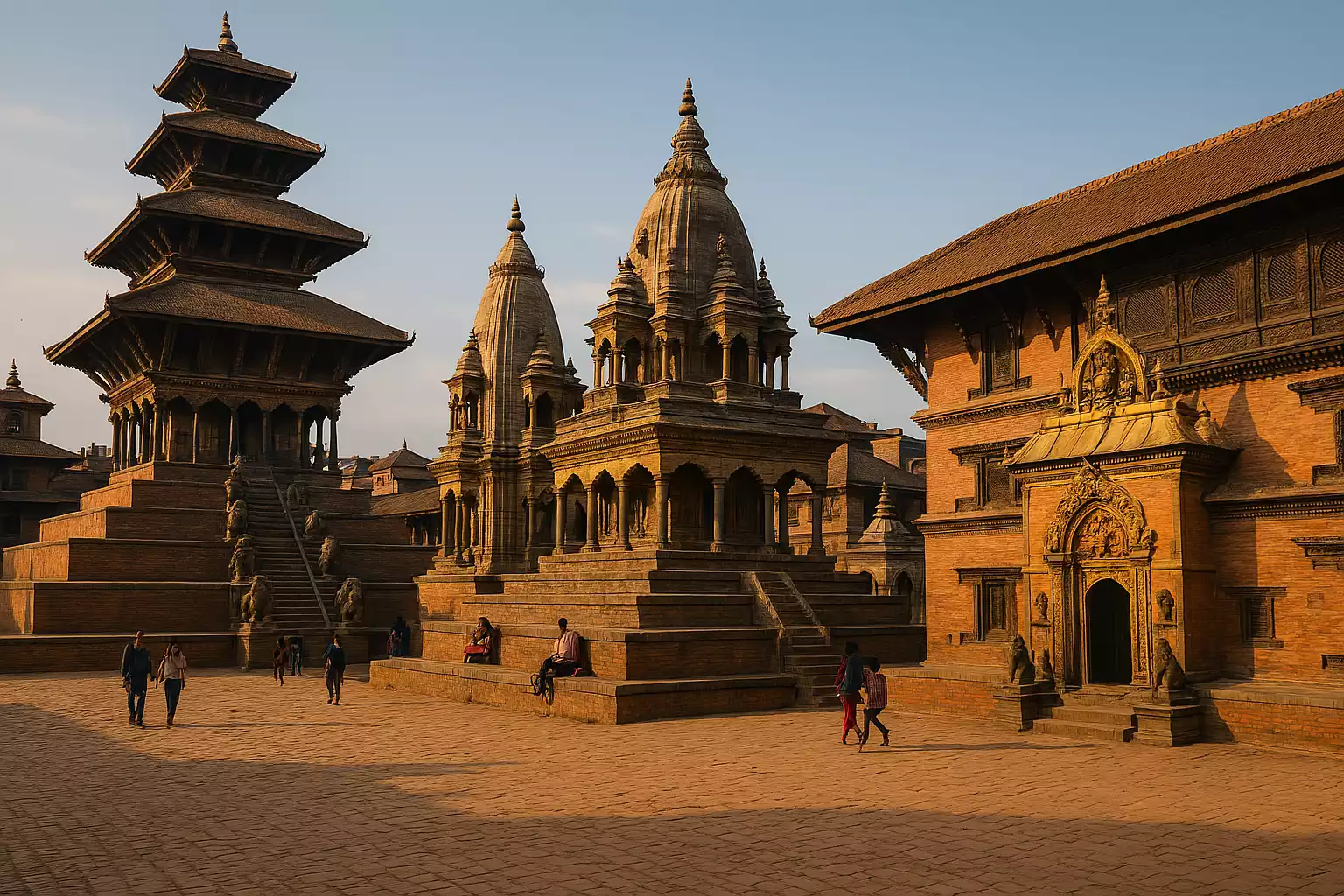
🌤️ Best Time to Visit Bhaktapur
Timing your trip right can seriously enhance your experience.
| Season |
What to Expect |
| Spring (Mar-May) |
Perfect weather, colourful flowers, and festivals like Bisket Jatra. |
| Autumn (Sept–Nov) |
Crisp skies are ideal for views and photos. Dashain and Tihar celebrations. |
| Winter (Dec–Feb) |
Quieter, cooler, and great for exploring without crowds. Bring a jacket! |
| Summer (Jun–Aug) |
Lush green surroundings, but also rainy. Not ideal for extensive outdoor exploring. |
🧭 Guided Tours vs. Exploring Solo
Guided tours are a great way to learn the deeper stories behind each structure. Local guides often share legends, religious context, and insider history you won’t find on signs.
- Available at the entrance gate or through Kathmandu-based tour companies.
- Cost: Around NPR 1,000–1,500 for a 2–3 hour guided tour.
Exploring solo? No worries! The square is walkable and well-marked. You can also download an audio guide or use mobile apps for self-guided tours.
🛑 Rules & Etiquette
- Be respectful in temples—shoes off before entering, and photography may be restricted inside.
- Dress modestly, especially if attending festivals or rituals.
- Don’t climb on monuments or lean against carvings—it’s a heritage site!
- Support local vendors, but avoid haggling aggressively.
🧺 What to Bring
- A camera or phone with plenty of memory—you’ll be taking lots of photos.
- Sunscreen, sunglasses, and water—especially in spring/summer.
- Cash (NPR)—many shops and eateries don’t take cards.
- A light scarf or shawl—helpful for temple visits and sun protection.
Visiting Bhaktapur Durbar Square isn’t just about sightseeing—it’s a cultural immersion. With just a bit of planning, you’ll be able to enjoy this ancient city like a pro.









